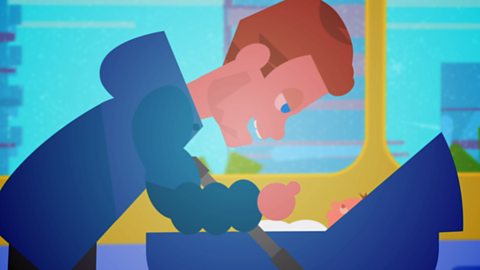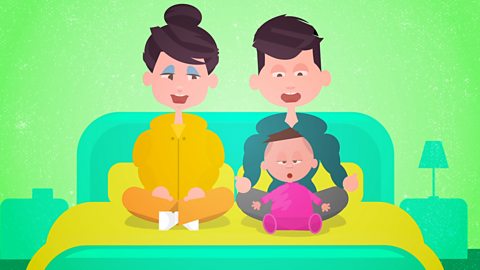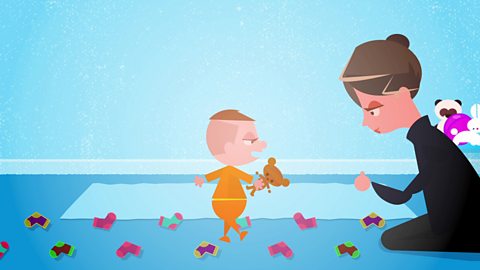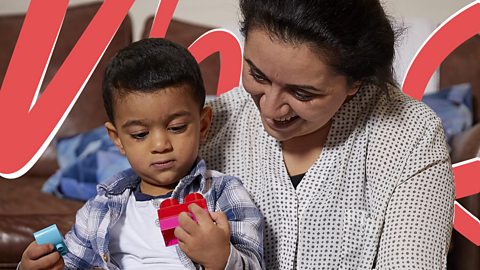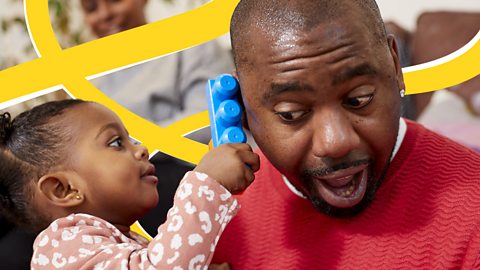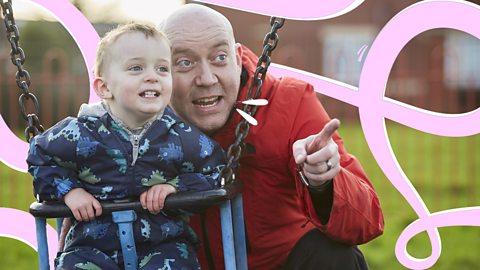Baby babble isn't just adorable, it's an early stage of your baby learning how to speak.
All babies babble in the same way initially, no matter where in the world they're from. It's how we speak to them that shapes their language.
We caught up with Gert Westermann, Professor of Psychology at Lancaster University, to find out more about how babies begin to make speech sounds and how parents can help them build their babble into words.
Babble, babble, babble, you’ve probably noticed your little one chatting away to themselves, so what exactly are they up to?
Well, they’re not bored and they’re not speaking a different language, babies babble when they’re ready to learn! From the moment they’re born, babies can make every sound that any human can make. But they haven’t learned to use their mouth muscles to make specific sounds. So, when they’re very young, they’re just experimenting with different sounds and mouth shapes
But by three to six months, babies begin tuning into the languages around them, becoming experts at recognising the sounds they hear every day. So, baby talk is actually very important –they’re practising! They’re exercising those muscles they need to make the sounds of their parent’s language. We know this because, at around three months old, babies in the UK and China make the very same cooing and gurgling noises but by five - eight months, as their awareness increases and their mouth muscles develop, they sound different, because their babbling adapts to the language they hear.
To help your baby develop speech, the next time your baby babbles, make the same sounds they make back to them.It might feel silly, but repeating their 'goo goo ga ga's helps them learn what they sound like ,and the right way to make the sounds.You’re also showing them how to take turns, which will be important when they get speaking!
When do babies start babbling?
“They start making noises really shortly after birth, and of course, they become more sophisticated during the first year of life. Babies start squealing and growling and making raspberry sounds really quite early on,” says Gert.
However, the sorts of sounds we usually think of as ‘babbling’, the repetitive gagaga/bababa-type sounds, are heard more often from around 6 months of age. Simple vowel sounds like ‘ah’ happen earlier, around 3-4 months of age.
What are babies doing when they babble?
“I guess the simple explanation of why they babble is that they are practising producing sounds,” says Gert. “They practise using their lips, tongues and vocal cords, gaining progressive control of their vocal cords in the first 6 months.”
Are babies trying to say words when they babble?
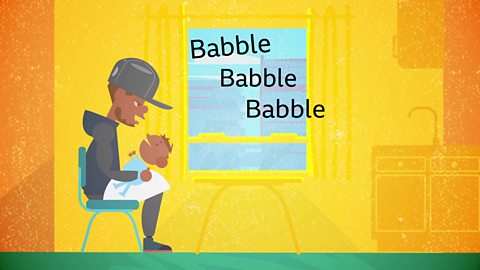
Gert is keen for parents to understand that babble isn't just babies practising making sounds but a way for them to communicate with adults around them. They want to tell you something about the world, even if they don’t have the words to say it yet. “There’s evidence that even some 8/9 month olds, when there are objects their parents have named for them, begin to change the consonant sounds they make to imitate their parents’ words, even with their limited vocal abilities.” So babbling is much more than a string of sounds: “It is them reacting to their environment”.
Babble plays an important function too: it’s a way of babies engaging adults’ attention. By babbling, they come to learn they can provoke a response from you. “There’s something called the still-face experiment,” Gert says. “If the baby and an adult are playing and chatting together and suddenly the adult stops still and holds a blank expression, the baby will babble even more to try and get the adult to engage with them again.”

Why does my baby mostly make 'bababa'/'gagaga'/'mamama' sounds?
The reason why babies make a lot of the same sorts of sounds when they first start to babble is pretty simple, according to Gert.
“Those sounds are easier to make than others. ‘Shhh’ and ‘fffff’ sounds are much harder for children to make - you have to blow quite hard, and you have to kind of press your lips and your teeth together, whereas ‘ga’ and ‘guh’ type sounds only require you to open and close the epiglottis at the back of your throat. Babies start with sounds that are easy to produce and then quite a bit later they learn to make these more complex sounds.”
How should adults respond to baby babble?
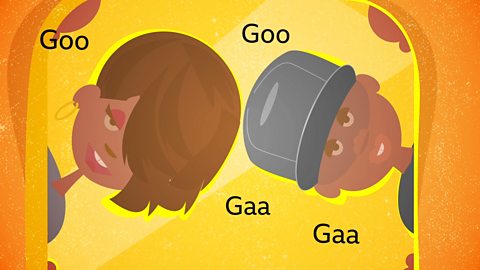
Because babbling forms children’s early attempts at communication, adults can try and treat babies as conversation partners. “Take the noises babies make seriously,” says Gert.
Don’t assume that because they can’t speak, you can’t speak with them. They might not offer you any great insights, but act as if they are!
“Just take a moment to think, what is it they might be trying to say? Is there a common focus like a toy or something to talk to them and tell them about? Responding in this way has been shown to further increase the amount babies babble.”
There’s a particular way that Gert suggests we interact with babies before they can speak too. “Turn-taking responses where you respond to the child’s babble, wait, and allow them to make more noise in return are especially good for the child’s development. It’s a really rewarding way for them to interact, even at a very young age.” So if you respond to your baby’s babble and then allow them time to make more noise, they’ll understand that it’s their turn to communicate. This shows them that you are listening and that their noises are important, key to conversation later on.

When does babble become words?
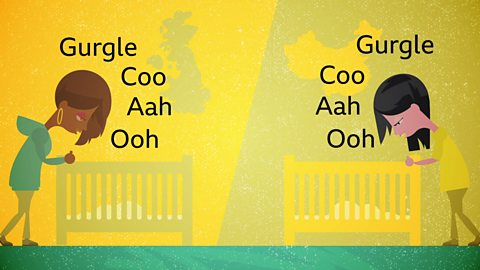
“It’s usually around 12 months when babies begin to say their first words, some later, some earlier – all babies develop differently,” Gert stresses.
Around the world, early baby babble sounds similar, starting with the same set of vocal sounds, but these develop differently depending on the influence of adults talking around babies. “There’s some debate over how babies move towards making the sounds of their parents’ language,” says Gert. “It certainly seems that by the end of the first year, the vowel sounds that babies produce when babbling move towards those of their native language.”
Babies start producing sounds, perhaps involuntarily at first, and then they start playing with them, practising them, exploring what they can do. And then, when they hear words, they try to imitate them, and then suddenly they’ve entered the world of language.


